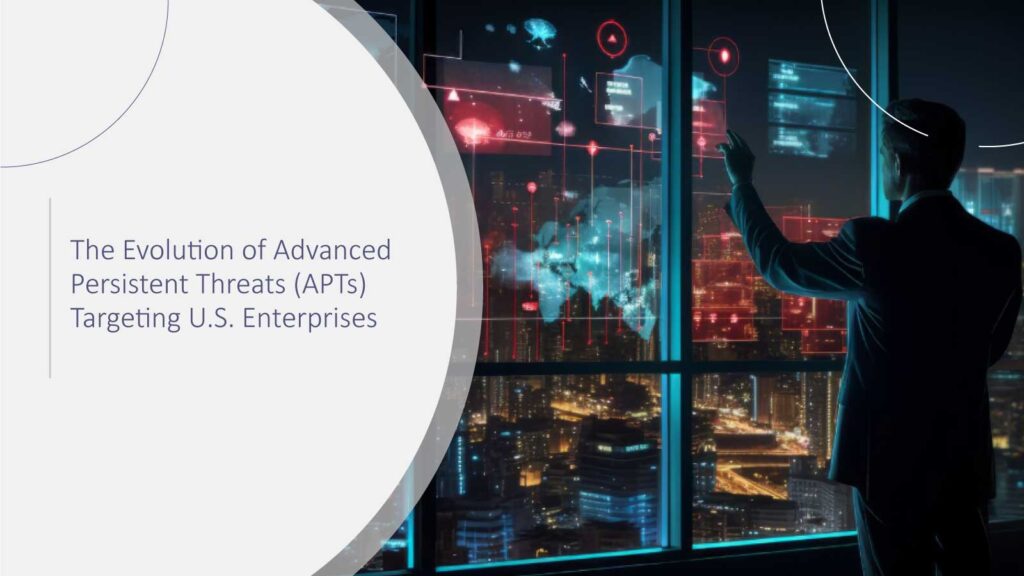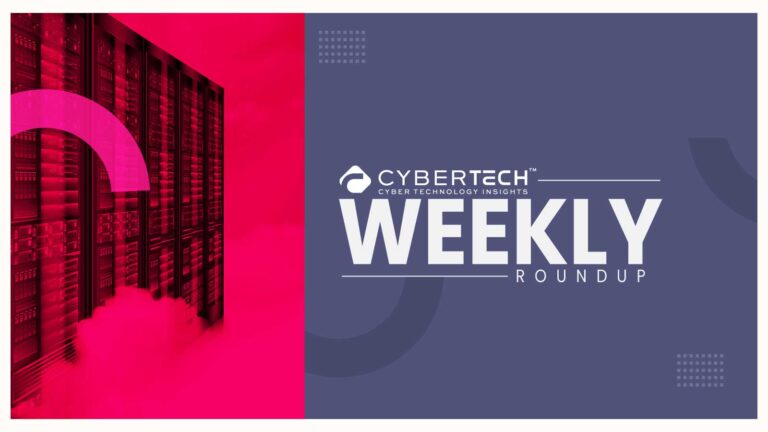Advanced Persistent Threats (APTs) are arguably the greatest threat to enterprise security in the United States. APTs are not the quick hits for immediate, short-term gain like typical cyberattacks. APTs are carefully planned campaigns to infiltrate. Also, to persist and employ stealth to extract sensitive information for the long term. National actors or well-organized cybercriminal groups foster APTs for U.S. enterprise intellectual property, financial data, and critical infrastructure. By nation in the last 20 years. An evolution of states, cybercriminal groups, targets, methods, and the overall sophistication of APTs has relied upon. Those are enterprises rethinking resilience, defense, and their long-term strategies around cybersecurity.
Understanding Advanced Persistent Threats in the U.S. Context
There are three defining characteristics of Advanced Persistent Threats. First is the use of advanced tactics that leverage custom malware alongside social engineering. Another is Persistence, which enables entry points into the networks used to operate. While stalking around sometimes for months or years. The last one is, purposes that are not monetary objectives. Such as APTs pursue strategic objectives that often include espionage, disruption, or any other form of sabotage.
The risk for U.S. enterprises is that the United States is a center for innovation, opportunity, and intellectual property. Not to mention a leader in financial power and infrastructure, making them a target. Defense contractors, healthcare, energy utilities, and technology firms are often targeted. Not if, when data is exfiltrated. Sensitive enterprise data in adversary hands impacts business continuity and fails to address national security threats.

1. The Early Era (2000s): The Rise of Cyber Espionage
In the early 2000s, the first phase began. Here US companies began to recognize the threat of an Advanced Persistent Threat (APT). One of the most recognized early examples was Titan Rain (2003-2006). Experts almost universally attribute a series of intrusions to Chinese actors. These intrusions targeted US defense contractors, as well as government agencies. And were effective in exfiltrating sensitive design documents and technical data.
Soon after, GhostNet and Operation Aurora demonstrated the breadth of espionage that leveraged cyber for monitoring US enterprises. Operation Aurora, uncovered in 2009, was an advanced attack that targeted Google and other major enterprises. By exploiting zero-day vulnerabilities, the attackers were able to gain access to valuable intellectual property. And gain operational awareness of senior management across the enterprise.
During this phase of recognition, we recognized the inability of traditional perimeter defenses to protect us from advanced persistent threats. The combination of the attackers’ stealth, patience, and resources left us ill-prepared for the organized efforts directed at our enterprises. At that point, we had little appreciation for how persistent these forces could be, nor for their coordinating capabilities.
2. 2010–2015: Zero-Day Exploits and Growing Sophistication
The 2010s witnessed a maintenance of the APT level. They began using zero-day exploits and better evasion techniques, which made it sophisticated. Stuxnet targeted Iran, but the discovery in 2010 shocked U.S. enterprises and announced that cyber weapons could change geopolitics. Even the level of sophistication could be redirected to private corporations.
This decade saw APT1 emerge (also known as Comment Crew), known for large-scale espionage campaigns against U.S. corporations. The Chinese military connected APT1, which stole terabytes of intellectual property across industries. It includes aerospace, pharmaceuticals, and technology from U.S. enterprises.
The techniques have also advanced. While initial compromise moved to spear-phishing emails, attackers started “living off the land.” During the lateral movement phase of their attack. They referenced live usage of legitimate administrative tools to mitigate detection post-compromise. U.S. enterprises began investing in endpoint detection and response (EDR). Security information and event management (SIEM), and dedicated incident response teams. However, even with these investments, detection often fell short of the sophistication of the adversaries.
3. 2016–2020: The Supply Chain Era
As we approached the mid-to-late 2010s, APT activity was more oriented toward manipulating trust placed in supply chains. A prime example is the NotPetya attack, which, although it was intended to primarily disrupt operations in Ukraine, ultimately affected organizations worldwide. This has resulted in millions of dollars worth of cyber losses to multinational corporations (including several with operations in the U.S.). NotPetya may not have had espionage at its center, but it demonstrated in very real terms, executed on a massive scale, how easily companies could be decimated globally through the manipulation of the supply chain.
The slow drip of growing threat exploitation of the supply chain truly became buckets of water virtually overnight after the 2020 attack on software provider SolarWinds. This event, albeit large and impactful to the U.S., primarily involved trusted networks used by our cybersecurity, defense, and government agencies. In the attack, adversaries inserted malicious code into Orion software updates, then they deployed the updates, enabling malware that users would download when the update deployment occurred. The systemic risk of supply chains in software deployment and the notion that trustworthy vendors might also be a threat vector were showcased and reinforced by this event.
For U.S.-based enterprises, the attack on SolarWinds was not just that they had been breached; it was also that their trust model for a system built on breaches had been breached. The U.S. government mandate was an executive order that invoked the Zero Trust Architecture, supply chain system settings, and incident reporting.
4. 2020–2025: Remote Work, Cloud, and Identity Attacks
The COVID-19 pandemic accelerated cloud adoption and remote work for enterprises in the US and presented a broader and more complex attack surface. It also became clear that these advanced persistent threats (APTs) were effectively adapting.
By 2021, the Hafnium group took advantage of Microsoft Exchange Server vulnerabilities, targeting thousands of enterprises across the US through Microsoft Exchange Server on-premises servers. This campaign set a good example of the vulnerabilities created by rapid digital transformation and the reliance on common software platforms that most enterprises were using during their transition to digital, to some degree.
Overall, large-scale attacks on multiple industries made them easy targets for APT attacks during this time, and ransomware campaigns with APT-like sophistication blurring the line between traditional criminal groups and nation-state actors. Attackers began to increasingly leverage identities and bypass multi-factor authentication (MFA) to steal credentials and violate cloud environments to hide their activity from defenders.
Responding, US enterprises began procuring a new system of defenses with the next generation, including Extended Detection and Response (XDR) solutions, establishing new Secure Access Service Edge (SASE) models, and focusing on identity-first security. This shift acknowledged that the latest threat landscape for enterprises has made boundaries non-existent, as identity has become a much-hyped new security perimeter.
5. 2025 and Beyond: The Next Evolution of APTs
With enterprises accelerating their digital transformation, APTs are moving to a new stage of development. Attackers are already using artificial intelligence (AI) to automate reconnaissance to generate convincing spear phishing campaigns, and even to escape anomaly-based detection systems. While adversaries using AI can rapidly learn from defenses, becoming more adaptive and difficult to detect, the existentially greater challenge is quantum computing, with its potential to compromise classical encryption. While practical use of quantum attacks is in the near future, the U.S. is already budgeting heavily for post-quantum cryptography in advance of this risk. Enterprises handling sensitive financial, healthcare, or defense-related data cannot afford to ignore this incoming risk.
At the same time, critical infrastructure (e.g., energy grids, utilities, transportation, finances) remains an essential component of U.S. national security. APTs engaging with critical infrastructure can disrupt not only enterprises, but entire communities and economies. Nation-state cyber competition makes certain that APTs will remain a ubiquitous characteristic of enterprise cybersecurity for the near future.
Conclusion
The changing landscape of Advanced Persistent Threats (APTs) is one of demands for progressively sophisticated defenses, changes in target types, and increased risks for U.S. enterprises. Beginning with state-sponsored espionage activities like Titan Rain and continuing today with the infusion of AI in APTs, APTs have evolved faster than conventional defenses. In a world defined by uncertainty, organizations must accept the reality that Advanced Persistent Threats are pervasive, not isolated, rare events.
As the tenets of adapting to uncertainty dictate, U.S. enterprises must embrace resilience, an intelligence-driven defensive concept, and real-time adaptations to solicit an offensive posture. In the coming decade, organizations that consider competition with APTs a strategic reality (not merely a technical problem) will be better equipped for the challenges ahead.
FAQs
1. What is the potential duration of Advanced Persistent Threats in U.S. enterprises?
APTs can go on unnoticed for several months or even years. Average dwell time in the U.S. was around 70 days according to industry studies. But some intrusions remain for longer.
2. Which industries in the U.S. are most targeted by APT groups?
Defense, energy, healthcare, financial services, and technology are the most frequent targets because these industries hold a critical mass of valuable IP and vital systems.
3. Can Antivirus products eliminate Advanced Persistent Threats?
Antivirus solutions can only go so far in eliminating APTs since attackers will use custom (or provides) malware and non-malicious tools to avoid detection and blend in with typical enterprise activity.
4. How does Zero Trust help with protection against APTs?
ZerofTrust continuously verifies access and reduces privileges, making it very difficult for APTs to move laterally within enterprise networks.
5. How will AI and quantum computers affect APTs?
APTs will be faster and adaptive using AI and will automate phishing and change their tactics in real-time. It advances the urgency of U.S. enterprises to prepare for post-quantum security.
To participate in upcoming interviews, please reach out to our CyberTech Media Room at sudipto@intentamplify.com.







